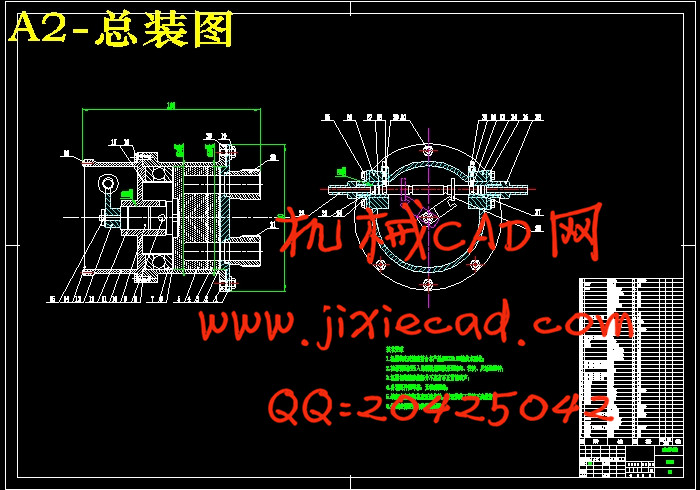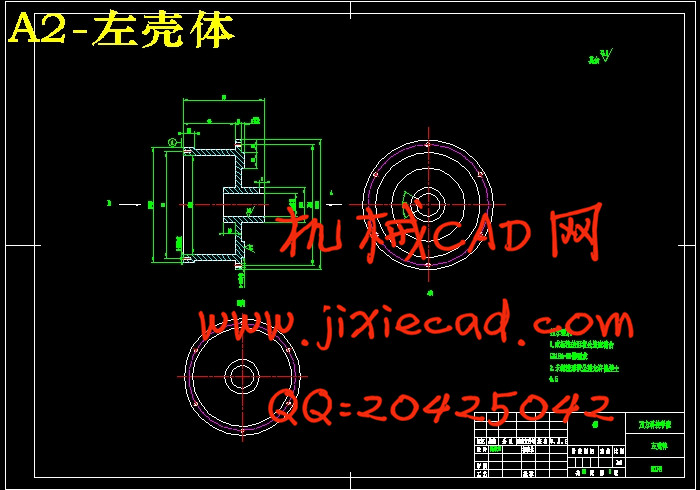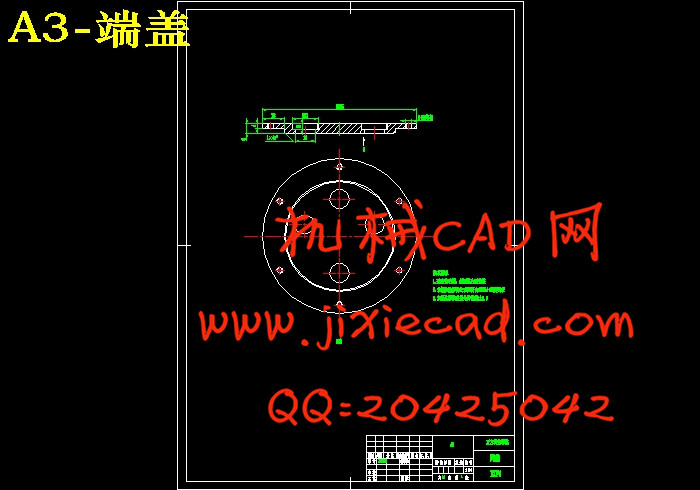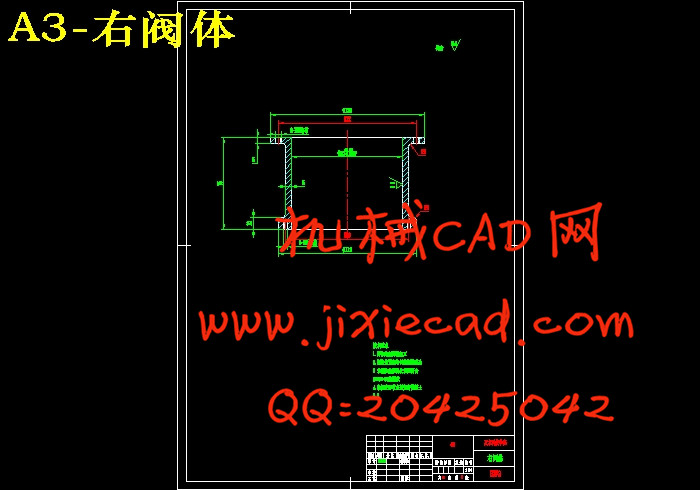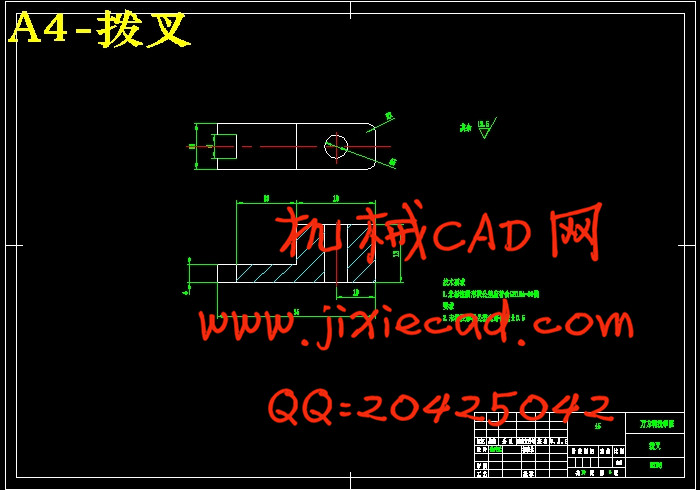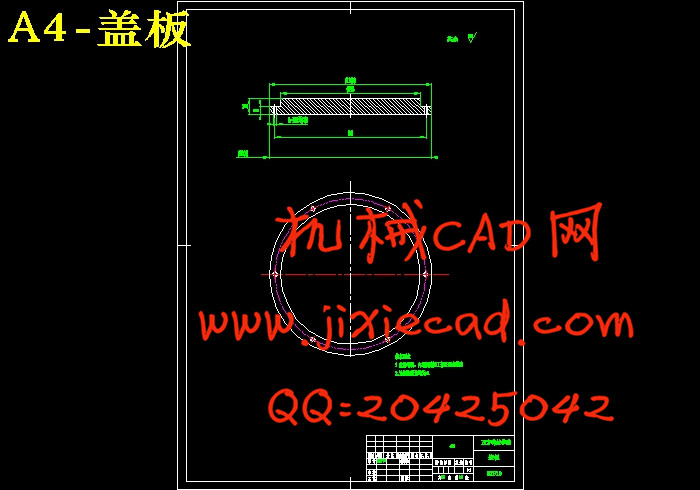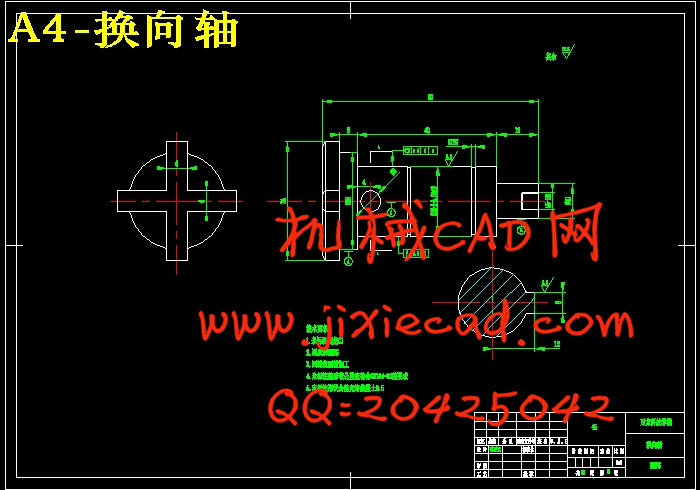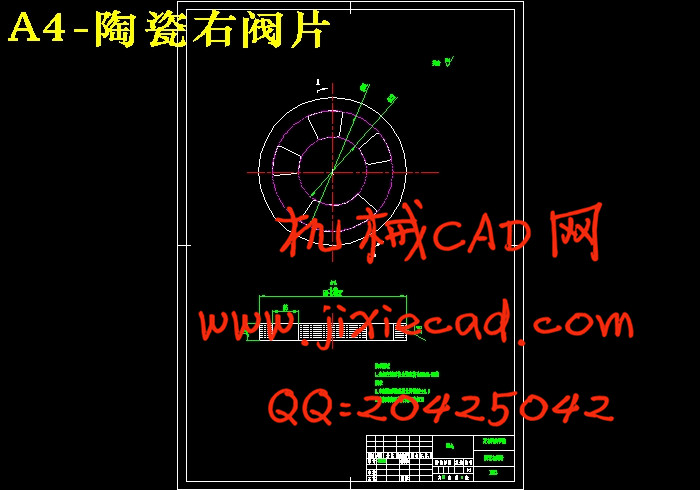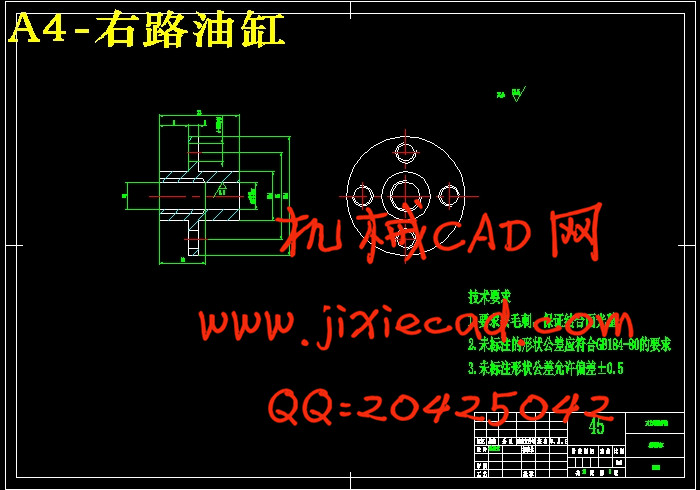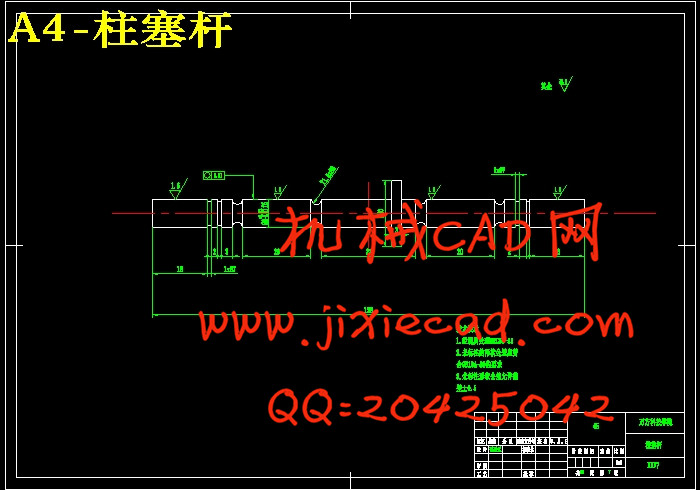设计简介
摘要
地下水有两种不同的埋葬类型,即埋葬在第一个稳定隔水层之上的潜水和埋葬在上下两个稳定隔水层之间的承压水。随着矿井开采深度的不断增加,当达到承压水位置时,因受到静水压力的影响,则承压水会涌入矿井,造成突水事故,其突水后水位的高度有承压水的压力决定。在煤矿生产中,突水是仅次于煤矿瓦斯突出的严重事故。因此对矿井突水的防治就尤为重要。其中主要措施有1.地面防水,包括修筑防洪沟、河流改道或河流防渗、封填老井口;2.井下防水治水,包括采掘前钻孔探水、阻断水路隔绝水源主要采用水闸门阻绝水源、采用水闸墙阻断水源、采用注浆水、采用封闭水泵房;3.预先排水、疏干降压,包括地面钻孔疏干降压、井下钻孔疏干降压、利用巷道疏干降压。限于技术条件,目前还无法辨别突水前兆信息进而进行预警:因此,预先排水、疏干降压仍是矿井防治水灾害的主要方法。目前排水设备以离心泵和潜水泵为主,但是用泵排水耗电大,成本高,且需要专人值班,手动启停,安全性差。矿压水自排系统可以解决这一技术问题,它可以自动的激昂承压水排到井上,无需额外的能源,也无需人工管理。本设计就是矿压水自排系统中的重要部件,它承载着系统换向的关键功能。
关键词 二位四通自动换向阀 矿井承压水排放 低能耗 自排系统
Abstract
In coal production,Water inrush is a serious accident only the second to coal mine gas outburst。So the prevention of sudden water-related disasters is significantful,and The underground pre- drainage is one of the main measures of prevention and control of water inrush accident。
The design relates to a valve , in particular, involving a new type of mine pressurized water from the drainage system in the two four-way automatic valve,and it is an important part of the system。Now centrifugal pumps and submersible pumps is useful,but pumps water system is power consumption and high cost,and need someone on duty、 manual start and stop equipment。For this specification, the two four-way directional control valve plays a very important role,it can be used to transfer three different mine confined water pressure and valve plate wear-resistant, corrosion resistant, high shock resistance and a three-level flat sealing, realize the advantages of strictly leakage。It can adapt to different water quality and pressure of automatic transmission of confined water in mine and confined water of small energy loss during transmission, and perfect coordination, implementation of artesian water in underground green emission。It is designed to be the exploration of underground water bursting clear, through the exhaust system back to the ground. Significantly reduce the possibility of water inrush accident occurred.
Key words two four-way automatic valve mine confined water emissions low energy consumption green emission
目录
1绪论 1
1.1毕业设计的意义 1
1.2选题背景及意义 2
1.3矿压水形成的原因 3
1.4基本原理简述 5
2二位四通换向阀的设计 7
2.1换向阀种类的选取 7
2.2换向阀的基本结构 8
2.3自动换向系统的工作原理 12
3二位四通自动换向增压装置的设计 14
3.1缸筒的设计 14
3.1.1缸体的材料 14
3.1.2缸体的技术要求 14
3.1.3缸筒内径D的计算 15
3.1.4结构的设计 15
3.1.5缸筒的壁厚 选取 16
选取 16
3.2缸盖的设计 16
3.2.1缸盖的材料 16
3.2.2缸盖的技术要求 17
3.3柱塞杆的设计和尺寸计算 17
3.3.1柱塞杆的作用 17
3.3.2柱塞杆的材料 17
3.3.3柱塞杆的技术要求 18
3.3.4柱塞杆的结构设计 18
3.3.5柱塞杆的设计计算 19
3.3.6柱塞杆上密封圈的选择 19
3.4液压缸油口的设计 20
3.4.1管接头的选用 20
3.4.2进出油口直径计算 20
3.5蓄能器的设计及尺寸的计算 21
3.5.1蓄能器的作用和原理结构 21
3.5.2弹簧与限位钢球 22
3.6螺纹连接的选用 22
3.7柱塞杆上密封圈的选择 23
3.8拨叉的设计 23
3.8.1拨叉的材料 23
3.8.2拨叉的尺寸计算 24
3.9自动换向增压装置与左壳体的连接形式 24
3.9.1埋弧自动焊焊缝的形成过程 24
3.9.2埋弧自动焊的优点: 24
4二位四通换向阀换向装置的设计 26
4.1换向装置的工作原理和基本结构 26
4.2换向轴的设计 27
4.2.1换向轴的作用和结构 27
4.2.2换向轴尺寸大小的选择 28
4.3轴承的作用与选择 29
4.3.1推力轴承的选择 30
4.4左右陶瓷换向阀片的设计 30
4.4.1陶瓷换向阀片的优势 30
4.4.2陶瓷阀芯的特点 32
4.4.3结构设计 33
4.4.4陶瓷阀片的工作原理和简图 33
4.4.5 阀门的结构设计需注意的几点 35
4.4.6尺寸的简单确定 36
4.5右端盖的设计 36
4.5.1右端盖的作用 36
4.5.2右端盖的形状和结构的设计 36
4.6右端盖管接头的选择 37
4.7右端盖尺寸的计算 38
4.8右密封垫圈的选择 38
4.9左密封垫圈的选择 39
5油液的选取和污染的控制 40
5.1油液的选取 40
5.2污染的危害 40
5.3污染控制的主要措施 41
6液压系统中需要重视的几个问题 43
6.1液压元件的失效方式 43
6.2液压系统设计中的节能问题 44
6.2.2液压系统中的能耗损失的分类 44
6.2.3节能的主要途径 44
6.3液压系统中的冲击、震动和噪声控制 45
6.3.1液压冲击: 45
6.3.2防止液压冲击的措施 45
6.3.3振动和噪声的污染 47
6.3.4振动和噪声的防治和改进措施 47
结 论 49
致 谢 51
参考文献 52
地下水有两种不同的埋葬类型,即埋葬在第一个稳定隔水层之上的潜水和埋葬在上下两个稳定隔水层之间的承压水。随着矿井开采深度的不断增加,当达到承压水位置时,因受到静水压力的影响,则承压水会涌入矿井,造成突水事故,其突水后水位的高度有承压水的压力决定。在煤矿生产中,突水是仅次于煤矿瓦斯突出的严重事故。因此对矿井突水的防治就尤为重要。其中主要措施有1.地面防水,包括修筑防洪沟、河流改道或河流防渗、封填老井口;2.井下防水治水,包括采掘前钻孔探水、阻断水路隔绝水源主要采用水闸门阻绝水源、采用水闸墙阻断水源、采用注浆水、采用封闭水泵房;3.预先排水、疏干降压,包括地面钻孔疏干降压、井下钻孔疏干降压、利用巷道疏干降压。限于技术条件,目前还无法辨别突水前兆信息进而进行预警:因此,预先排水、疏干降压仍是矿井防治水灾害的主要方法。目前排水设备以离心泵和潜水泵为主,但是用泵排水耗电大,成本高,且需要专人值班,手动启停,安全性差。矿压水自排系统可以解决这一技术问题,它可以自动的激昂承压水排到井上,无需额外的能源,也无需人工管理。本设计就是矿压水自排系统中的重要部件,它承载着系统换向的关键功能。
关键词 二位四通自动换向阀 矿井承压水排放 低能耗 自排系统
Abstract
In coal production,Water inrush is a serious accident only the second to coal mine gas outburst。So the prevention of sudden water-related disasters is significantful,and The underground pre- drainage is one of the main measures of prevention and control of water inrush accident。
The design relates to a valve , in particular, involving a new type of mine pressurized water from the drainage system in the two four-way automatic valve,and it is an important part of the system。Now centrifugal pumps and submersible pumps is useful,but pumps water system is power consumption and high cost,and need someone on duty、 manual start and stop equipment。For this specification, the two four-way directional control valve plays a very important role,it can be used to transfer three different mine confined water pressure and valve plate wear-resistant, corrosion resistant, high shock resistance and a three-level flat sealing, realize the advantages of strictly leakage。It can adapt to different water quality and pressure of automatic transmission of confined water in mine and confined water of small energy loss during transmission, and perfect coordination, implementation of artesian water in underground green emission。It is designed to be the exploration of underground water bursting clear, through the exhaust system back to the ground. Significantly reduce the possibility of water inrush accident occurred.
Key words two four-way automatic valve mine confined water emissions low energy consumption green emission
目录
1绪论 1
1.1毕业设计的意义 1
1.2选题背景及意义 2
1.3矿压水形成的原因 3
1.4基本原理简述 5
2二位四通换向阀的设计 7
2.1换向阀种类的选取 7
2.2换向阀的基本结构 8
2.3自动换向系统的工作原理 12
3二位四通自动换向增压装置的设计 14
3.1缸筒的设计 14
3.1.1缸体的材料 14
3.1.2缸体的技术要求 14
3.1.3缸筒内径D的计算 15
3.1.4结构的设计 15
3.1.5缸筒的壁厚
3.2缸盖的设计 16
3.2.1缸盖的材料 16
3.2.2缸盖的技术要求 17
3.3柱塞杆的设计和尺寸计算 17
3.3.1柱塞杆的作用 17
3.3.2柱塞杆的材料 17
3.3.3柱塞杆的技术要求 18
3.3.4柱塞杆的结构设计 18
3.3.5柱塞杆的设计计算 19
3.3.6柱塞杆上密封圈的选择 19
3.4液压缸油口的设计 20
3.4.1管接头的选用 20
3.4.2进出油口直径计算 20
3.5蓄能器的设计及尺寸的计算 21
3.5.1蓄能器的作用和原理结构 21
3.5.2弹簧与限位钢球 22
3.6螺纹连接的选用 22
3.7柱塞杆上密封圈的选择 23
3.8拨叉的设计 23
3.8.1拨叉的材料 23
3.8.2拨叉的尺寸计算 24
3.9自动换向增压装置与左壳体的连接形式 24
3.9.1埋弧自动焊焊缝的形成过程 24
3.9.2埋弧自动焊的优点: 24
4二位四通换向阀换向装置的设计 26
4.1换向装置的工作原理和基本结构 26
4.2换向轴的设计 27
4.2.1换向轴的作用和结构 27
4.2.2换向轴尺寸大小的选择 28
4.3轴承的作用与选择 29
4.3.1推力轴承的选择 30
4.4左右陶瓷换向阀片的设计 30
4.4.1陶瓷换向阀片的优势 30
4.4.2陶瓷阀芯的特点 32
4.4.3结构设计 33
4.4.4陶瓷阀片的工作原理和简图 33
4.4.5 阀门的结构设计需注意的几点 35
4.4.6尺寸的简单确定 36
4.5右端盖的设计 36
4.5.1右端盖的作用 36
4.5.2右端盖的形状和结构的设计 36
4.6右端盖管接头的选择 37
4.7右端盖尺寸的计算 38
4.8右密封垫圈的选择 38
4.9左密封垫圈的选择 39
5油液的选取和污染的控制 40
5.1油液的选取 40
5.2污染的危害 40
5.3污染控制的主要措施 41
6液压系统中需要重视的几个问题 43
6.1液压元件的失效方式 43
6.2液压系统设计中的节能问题 44
6.2.2液压系统中的能耗损失的分类 44
6.2.3节能的主要途径 44
6.3液压系统中的冲击、震动和噪声控制 45
6.3.1液压冲击: 45
6.3.2防止液压冲击的措施 45
6.3.3振动和噪声的污染 47
6.3.4振动和噪声的防治和改进措施 47
结 论 49
致 谢 51
参考文献 52


